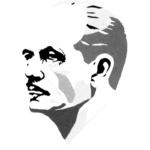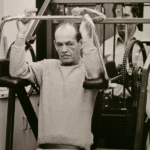MedX History

Medical training of skeletal muscle requires more than just a few dumbbells or elastic bands and simple exercise machines. To gain the trust of doctors and therapists worldwide — more research and accurate knowledge is needed to find the best training solutions.
Arthur Jones first revolutionized the fitness industry with the development of the Nautilus exercise equipment and the coinciding Nautilus training principle. Jones then improved his design and created the MedX training equipment and system in collaboration with top orthopedic and sport experts at the University of Florida.
What Arthur Jones started with MedX in the United States many years ago continues today in Germany. “Die Delphex Kräftigungstechnik GmbH” (Delphex Strengthening Company) now produces MedX equipment in Germany under Delphex brand.

MedX is the abbreviation for Medical Exercise. Today MedX training technology is recognized by experts in the field as the leading form of medical strength training.
Disorders and functional impairment of the spine represent the most common and costly problems of modern health care plans. Approximately 60-80% of the population suffers from temporary problems associated with the spine, while 20-30% suffer chronically.
Health insurers spend billions of dollars on the costs of “back problems”. Operations to fix these problems are becoming more common. This could be avoided to a large extent with the targeted and focused strength training of the MedX equipment.
The excessive costs in the United States required for diagnosis, surgical and conservative treatment, led to the largest research project to date in search of proper treatment and rehabilitation of spinal patients. The project took place at the “Center for Exercise Science” at the University of Florida in Gainesville, in 1972.
Under the direction of Michael Pollock, the former president of the “American College of Medicine” in Gainesville and Vert Mooney, MD from the University of California at San Diego, 14 teams were involved in the technical implementation of the computer-based diagnostic and therapeutic procedure of MedX. The results of this research project were remarkable. Almost all patients with back pain demonstrated weaker deep back extensor muscles than healthy people. The lumbar extensors are primarily responsible for the stability of the spine.
To ensure an isolated test and therapeutic training of these muscle groups, the pelvis must be completely stabilized. By doing so, the stronger gluteal and hamstring muscles are eliminated from the movement chain. The patented pelvic restraint of the MedX Lumbar Extension Machine allows for effective control and even re-coordination of this muscle group.


